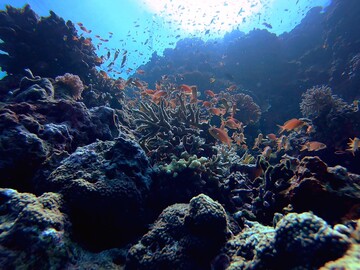How do you collect data?

Observing marine life for data collection.

Observing marine life for data collection.
Collecting data means gathering information or facts about a specific topic. People collect data to learn more about something and make decisions based on what they find.
There are different ways to collect data. One way is by asking people questions. Have you ever been asked to complete a survey? That's a way to collect data! For example, let's say we want to know what is the favorite ice cream flavor among your classmates. We could ask each person what their favorite flavor is and write down their answers. Then we could count how many people choose each flavor to find out which one is most popular.
Another way to collect data is by observing. This means watching and taking notes on what happens. Let's imagine we want to know which type of bird visits your schoolyard the most. We could spend some time watching the birds and writing down which ones we see. Then we could count how many times each bird appears to find out which one is the most common.
Sometimes, people use tools to collect data. Think about a thermometer you use to measure the temperature. Scientists use tools to collect data too! For example, if they want to know how much rain falls in a month, they use a rain gauge to measure it. They can then record the amount of rain each day and add it up to find the total.
In conclusion, collecting data is all about gathering information or facts. You can collect data by asking questions, observing, or using tools. It helps us learn more about different topics and make decisions based on what we find. So, the next time you're curious about something, try collecting data to find the answer!
How do scientists collect data?
Scientists collect data in many different ways. They use special tools and equipment to measure things like temperature, rainfall, and even the number of animals in a certain area. For example, if scientists want to know how hot it is outside, they can use a thermometer to measure the temperature. They can also use cameras to take pictures of animals and count how many they see. By collecting this data, scientists can learn more about the world and make important discoveries.
How do you communicate your findings using data?
Once you have collected all your data, it's important to share your findings with others. One way to do this is by creating graphs or charts. Graphs can show information in a visual way, making it easier to understand. For example, if you collected data on the number of books students in your class read per month, you could create a bar graph to show the results. This would make it clear which students read the most books. Another way to communicate your findings is by writing a report. You can explain what you learned from the data and why it is important. Sharing your findings with others can help them learn something new and maybe even inspire them to collect their own data.
How do you organize data?
Organizing data means putting it in a way that makes sense and is easy to understand. One way to organize data is by making a table. A table has rows and columns where you can write down different pieces of information. For example, if you wanted to organize data about the different types of fruits your classmates like, you could make a table with columns for the fruit names and rows for each classmate's name. Another way to organize data is by using categories or groups. If you were collecting data on different types of animals, you could group them into categories like mammals, birds, reptiles, and so on. This helps to make the data more manageable and organized.

Observing marine life for data collection.